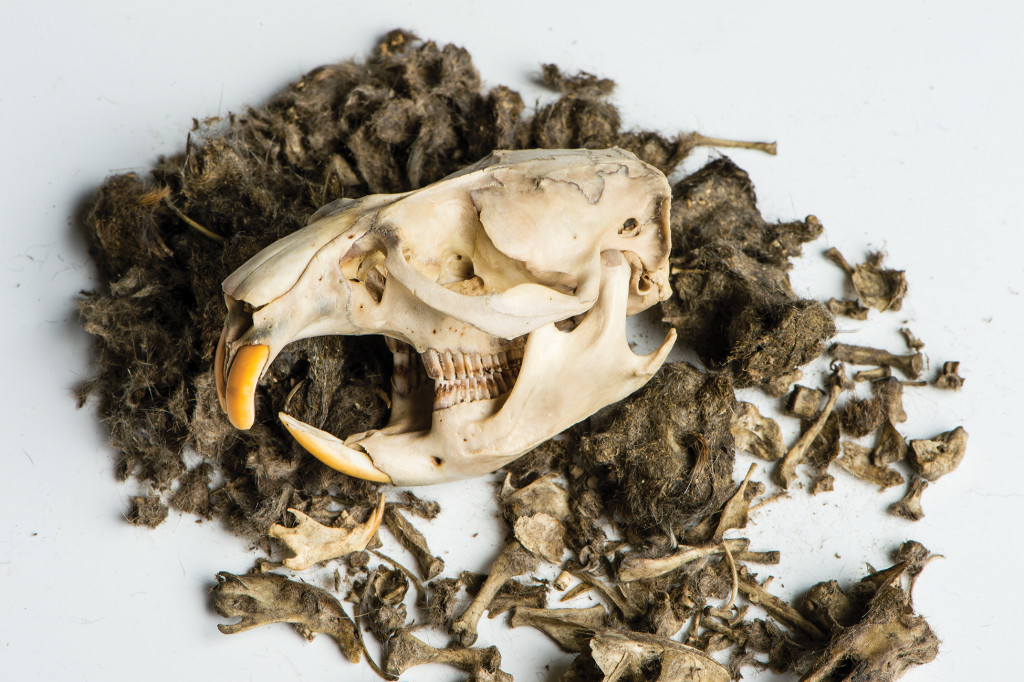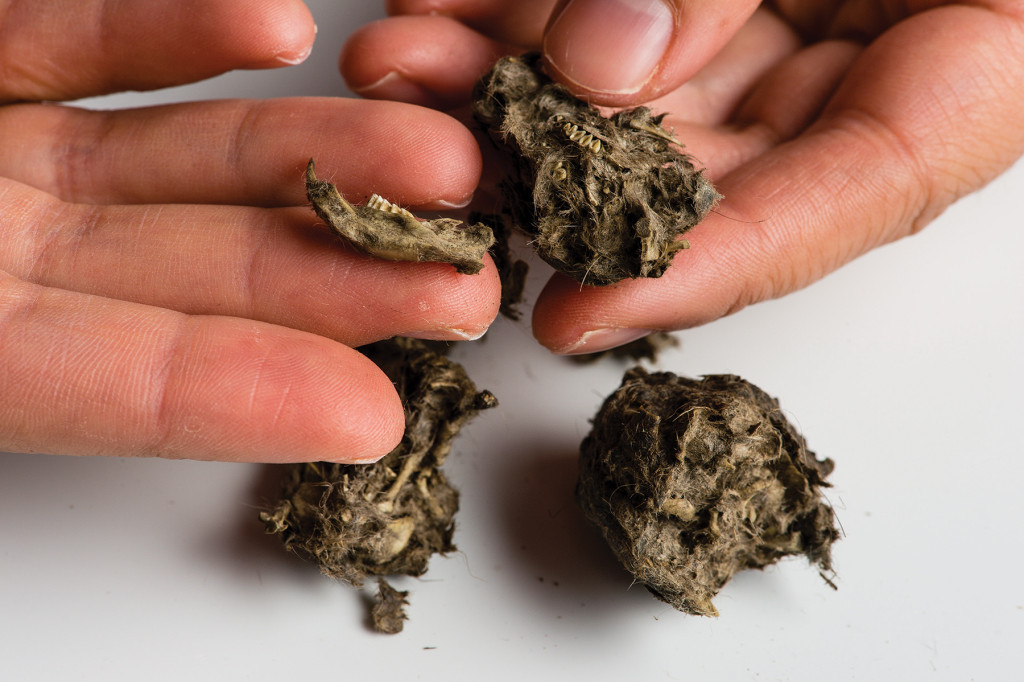
By Monica Macoubrie, Wildlife Education Specialist
One of my favorite activities to do with students is to dissect owl pellets. Now, before you freak out about children looking through poop or puke, take a step back and know that it is neither. A pellet is a pellet, but what exactly is it?
Owls are raptors, or birds of prey. Simply put, they hunt and eat the animals that they catch. These birds will eat a variety of prey, such as small rodents, other birds, bugs and even reptiles, like snakes and lizards. When owls eat, they don’t chew because they don’t have teeth. Thus, their only option is to swallow prey whole.
Soft tissues, such as the brain, guts, muscles and skin can move through an owl’s stomach and be digested as normally as we would eat a steak or a salad. But indigestible parts, like teeth, bones, fur or feathers, are formed into an oval mass called a pellet, which they expel back up through their beaks. Owls do not produce enough stomach acid to digest all these hazardous items, which could injure the owl if they were to enter the intestines.
Let’s take a look at how owls make pellets.
Owl Anatomy
An owl has two stomachs. The first is called the glandular stomach, which produces acids, chemicals and mucus that helps the owl separate the indigestible and digestible parts of its food. The second stomach is known as the gizzard. The gizzard is highly muscular and grinds up the meaty part of the meal. Once this material has been broken down, it moves into the owl’s intestine, but the bones, fur, feathers and teeth remain in the gizzard. The gizzard will then work to form a pellet by compressing the indigestible portion of the meal. Several hours after a meal, the owl will have formed a pellet.
Once the pellet is formed, it will then move into the glandular stomach. The pellet will remain in this area until the owl has absorbed the last remaining nutrients from the meal. This could take as long as 6-10 hours. At this point, the owl will then regurgitate the pellet and be ready to eat again later. Depending on the size of the owl and how much it eats in a night, an owl could produce anywhere from one to four pellets in a day. When regurgitated, these pellets are around the size of a person’s thumb, depending on the size of the bird and the meal. Each pellet usually contains the remains of about four to five small prey and/or feathers.

Where to Find Owl Pellets
If you’re out hiking or simply walking around in your neighborhood, it is not uncommon to find owl pellets. Pellets often accumulate at roosting, or nesting, sites, where owls spend a lot of time hiding or sheltering from weather.
Quite a few other birds also produce pellets, from herons to hawks. Even several swallows eject pellets of the insect exoskeletons they eat. But because owls swallow more of their prey whole than say, a hawk would, which would tear its prey into smaller bite-sized pieces, the intact bones found in an owl pellet are particularly exquisite to examine.
How do you identify an owl pellet? Owl pellets look similarly to the mass of lint you might pull out of your dryer. When fresh, owl pellets will be black and wet or sticky. Extremely fresh pellets may even blacken your fingers if touched. Pellets that lie in undisturbed places will remain intact for as long as two years before they start to fall apart. Over time, the owl pellet will change from a dark, wet color to a lighter, drier mass.
If you are out specifically looking for owl pellets, remember to take care in collecting as to not disturb the owls. It is illegal to disturb or harass birds under the Migratory Bird Treaty Act. Any bird that isn’t a game species or an invasive species falls under this protection.
How Are Owl Pellets Collected?
Many students in Nebraska have the unique opportunity to dissect owl pellets in school, which provides a great lesson on the food chain. By dissecting an owl’s pellet, students can determine what the owl ate and how much. They can then determine each animal’s place on the food web.
Biologist can also find owl pellets useful. The presence of pellets can help researchers determine which owls are in a certain area. This data can also determine which small animals and insects are in an area as well. If you get the chance to examine what is inside an owl pellet, you will find there is a lot to learn, and it is surprisingly fun.
If you’re a parent or educator wanting to get your hands on pellets, you can buy owl pellets online from websites such as Carolina Biological Supply or Pellet.com. Many of these companies employ a team of people known as the “owl pellet collectors”. These collectors visit owl-heavy routes in forests and wild areas every 4-6 months. They look at roost sites and collect as many owl pellets they can find. Then at their company’s processing facilities, all pellets are heat pasteurized in an oven. They are heated to about 260°F for about 10 hours, and this process sanitizes the pellets by killing all bacteria. Finally, the pellets are wrapped in foil and packaged for mailing. When students receive them, the pellets look like tiny baked potatoes wrapped in foil.
So, the next time you have the chance to dissect an owl pellet, take it. You never know what treasures you will find.
